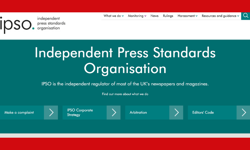When I started my career in online marketing, my mentor, Sylvester Stein, told me there are three words that act like catnip to potential customers, hugely increasing your chance of converting them into a lead or subscriber. Those words are ‘new’, ‘amazing’ and, of course, ‘free’.
Free this, free that
The web is awash with Free.
Free ezine. Free download. Free report. Free tips. Free newsletter. Free trial. Free software. Free advice. Free information. Free shipping. Free gift. Free access. Free stuff.
Freecycle. Google. Facebook. Twitter. BBC News. YouTube. Yahoo! Flickr.
Free apps for your iPhone. Free news on the Guardian, the Mail, the Sun. Free email with Hotmail. Freeware and free nudes and free muffins with this printable Starbucks coupon…
We expect everything online to be free. 61% of 15-24 year olds do not feel that they should have to pay to download music from the internet. Any changes to Facebook’s policies causes its users to howl with protest, even though they don’t pay a penny to use it. Every morning, millions of us browse to the website of our favourite newspaper (a word on the verge of obsolescence?) to read exactly the same words we’d have to pay for in the newsagent, but with added extras like the ability to abuse the journalist responsible in the comment box.
World according to Chris
In his new business book, Free, Wired magazine’s editor-in-chief Chris Anderson celebrates this new world. Originally an article in his magazine, Anderson has a lot to say that should be essential reading for publishers who have spent too many years beating their heads against a paywall and fretting about the value of content. In Free, Anderson argues that the near-zero costs of distribution online (like the infinite shelf space he wrote about in his previous book, The Long Tail) are transforming business models – for the better.
“Information wants to be free,” he says: “Anything that touches digital networks quickly feels the effect of falling costs. The moment a company's primary expenses become things based in silicon, free becomes not just an option but the inevitable destination.”
If you’re not offering content for free, somebody else will. So you have spent years building a reputation as the leading publication about model aircraft. You have the best writers, the top contacts, the knowledge and the authority... You charge a fair price to your readers. And then someone comes along and offers the same information for free. It’s like the Evening Standard trying to compete with London Lite – it couldn’t, which is why London’s remaining paid-for paper went free after 182 years. Well, its site has been free for years, and with the advent of smartphones and e-readers, soon the newspaper’s strongest USP – that you can read it on the train – is about to vanish.
But what about the content? All that beautiful content has to be paid for. Writers won’t do it for nothing - well, unless they’re interns or wannabe writers trying to build a reputation or those pesky bloggers… Still, quality writing and information isn’t cheap, and whenever I go to a conference, I meet publishers and marketers who even now are loathe to give anything away online for fear of ‘giving away too much’ or ‘de-valuing our content’.
However, as Anderson points out: “The supply of content has grown by factors of million, but demand has not. We still only have… twenty-four hours in the day. Of course, all content is not created equal and Facebook pages can’t compare to the New York Times – unless that Facebook page is your friend’s, in which case it may be far more interesting than the Times (for you).”
The internet has created a vast universe of amateur content, a lot of it of superb quality, from blogs to Flickr photos. And when you add in the seemingly-suicidal decision of nearly all of the top magazines and papers to make their own content free, along with thousands of web-only professional publications, then what choice to do you have but to join in with this free-for-all?
Rupert’s world
You could wait for Rupert Murdoch to turn everything around, as he has promised / threatened to do. It’s worth quoting Murdoch, talking in August last year, at length, as his argument stands in direct opposition to Anderson’s:
“The digital revolution has opened many new and inexpensive methods of distribution. But it has not made content free. Accordingly we intend to charge for all our news websites… Quality journalism is not cheap, and an industry that gives away its content is simply cannibalising its ability to produce good reporting. The increase we have seen in our Wall Street Journal subscriptions proves to me that the market is willing to pay for that quality... We're certainly satisfied that we can produce significant revenues from the sale of digital delivery of newspaper content."
Since then, Murdoch has gone further, stating that News International will target aggregators and force “content kleptomaniacs” like Google and Yahoo! to pay for the news they display. It’s as if civil war is about to break out across the web, with the old media dinosaurs taking on the new media mammoths.
But it is unlikely that Murdoch is talking about charging for all of the content on the Sun. And if he does, traffic will plummet faster than you can say ‘Gotcha!’ More likely, he’s thinking of a Freemium model, where the majority of the content is available for free and a charge is made for the most desirable stuff.
This is the model we use on the sites that I manage – and the good news is not only that it works, but that existing publishers, especially those who have been in the game for some time, have a head start over the pureplay whippersnappers.
Profiting from Free
Our oldest publication, a newsletter for athletes called Peak Performance (PP), started life in 1990. By the time the web boom of the late nineties came along, PP had amassed a huge archive of content – articles with a focus in a niche area, sports science. Unbeknown to the writers of the time, these articles were rich with keywords: the very words that potential subscribers to PP were likely to type into search engines.
Instead of hiding all this lovely content behind a wall for fear of it being devalued and existing subscribers deserting in droves, Sylvester Stein and his team decided to put the entire archive online – free. It was because of this simple decision that PP is a thriving business today with half a million monthly visitors. And where does the revenue come from? Nearly all of it from selling information.
The model is simple: we use free content from our archive (free for both us and the user) to bring in visitors. We use free ezines to entice those visitors to give us their email address and other data. And then we sell them subscriptions to the paid-for newsletter along with books which are made up of articles that have previously appeared in the newsletter.
The power of downloads
We use the same model on our education website for parents, www.MyChild.co.uk, which started life as a magazine but is now a digital subscription product. MyChild doesn’t have an enormous archive of content like PP so while we are building our traffic, we use Google Adwords to generate leads. And how do we generate those leads? By offering searchers free downloads. (Tip: ‘Download’ is the fourth magic word along with ‘free’, ‘amazing’ and ‘new’; wherever we offer free downloads we double conversions.)
Those leads are then sold access to our premium area – where they get more downloads. They are paying for not just more volume and richer information but for the convenience of better organisation and, I believe, the emotional high of feeling that by paying they are doing something good for their children (our subscribers do so to help their kids with their education).
There are numerous other ways of making money from Free, and Anderson lists many of them in his book. The most obvious way is advertising, although the amount advertisers will pay has dwindled in this recession, especially on display advertising. A few years’ ago, there was an enormous goldrush based around Google Adsense with thousands of sites suddenly making big money from free content simply by placing contextual ads on the page. Unfortunately, the amount of money to be made here has dropped dramatically, but it may come back – particularly as more and more advertisers move towards performance advertising, where leads and sales are all that matters.
Selling data or leads is another way to monetize your traffic and your database. Or you can use free content to bring in traffic and then send it to a shop – for example, on MyChild, we send our visitors to our ecommerce site where they can buy books and software. You could join affiliate networks and promote other companies’ products. The Freemium model alone has many variations, including time-limited and feature-limited.
In the end, Free is a marketing tactic. It always has been, from the days when Jell-o gave away free cookery books to encourage sales of flavoured, coloured gelatine (yum!). The difference now is that, on the web, Free is the most common price, and whether we like it or not, it is up to us publishers to find ways to take advantage of it. My own experience has proved it can work. And while many people – such as Rupert Murdoch – may dislike what Chris Anderson has to say, we cannot ignore it. It will be fascinating to see what happens next in the land of the Free – which is also the home of the brave.










